Thanks for clicking into our end of the year coverage! Merry-Go-Round Magazine is an independent culture site funded by people like you! If you’re enjoying our End of 2022 Coverage, consider becoming a member of our Patreon, or even donating to our operation here!
We will look back at 2022 as finding a paradise in limbo: a surprisingly vast array of robust original titles produced in anticipation of audiences returning in droves to their local multiplex, and right before the streaming bubble burst. If you were one of five total feature films that were able to spin a profit in 2022, then congratulations, The Movies were indeed back, but a fat R.I.P. to the rest. The year provided films that predicted, or perhaps hoped to summon out of the force of sheer will, a return to psychological and material stability, but hardly anyone took the bait . . . Except for us, baby, movies, movies, movies!
HONORABLE MENTIONS
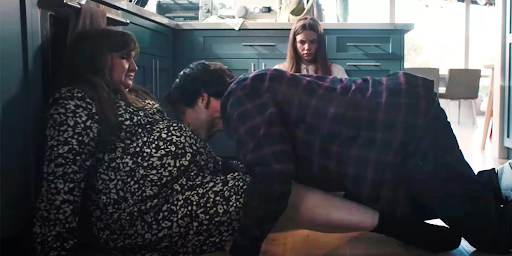 SHARP STICK
SHARP STICK
The queen of cringe, Lena Dunham, returned in 2022 with the best film of the year that you most likely missed due to its limited release. Sexy and hilarious, painful but sweet, with a fantastic ensemble cast (Taylor Paige! Janicza Bravo! Jennifer Jason Leigh! Lena!) to boot, I’m on my knees begging everyone to watch. [Katarina Docalovich]
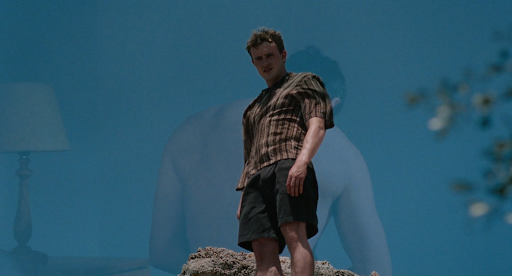 AFTERSUN
AFTERSUN
For the biggest emotional gut-punch of the year, look no further than the last 10 minutes of Charlotte Wells’ debut (!) feature AFTERSUN. It’s an all-but-guaranteed ticket to unpacking parental trauma you didn’t even know you had. [Taylor Lomax]
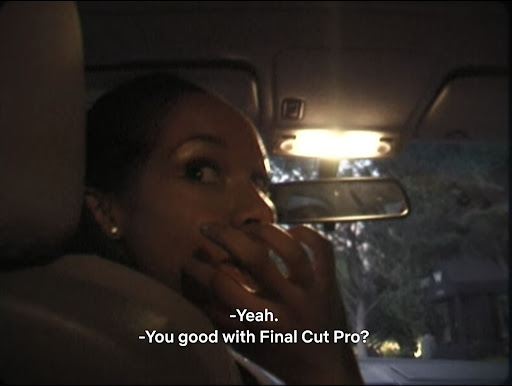 JEEN-YUHS
JEEN-YUHS
Coodie and Chike’s multi-part epic lumbers on the heels of throttled ego and hurt feelings—editing the fading memories of DV tapes in the ways that transform backpackers into gods—encapsulating the draining self-doubt, and mourning of a living person, that comes from learning your best friend has always considered you an acquaintance. It is also about the recording of THE COLLEGE DROPOUT. [Kevin Cookman]
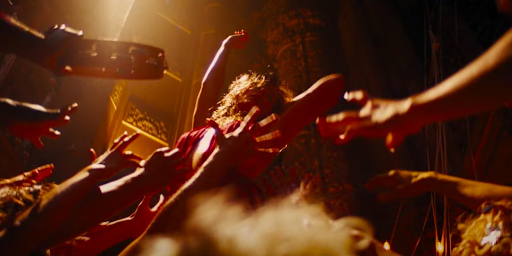 BABYLON
BABYLON
An overindulgent, overblown, breathlessly maudlin ode to an era that never really was, BABYLON is a rare show of bravura that sees a million flawed pieces come together in one crowning achievement. Whether Chazelle’s vision is well-received or not hardly matters, just that it is. [Joseph Simpson]
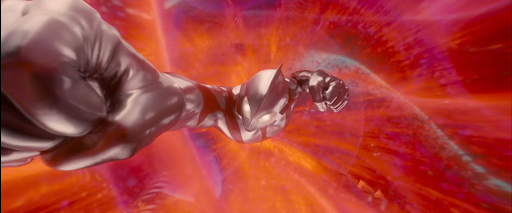 SHIN ULTRAMAN
SHIN ULTRAMAN
From frame one, SHIN ULTRAMAN totes itself as the cheekier SHIN GODZILLA, plopping you right into the kaiju crisis. Director Shinji Higuchi admits he had more fun with this one, working with original Ultraman Bin Furuya and free from the constraints of a deadline making way for an American Godzilla (🤮). Not only is there, of course, the utmost respect for the Saturday morning sci-fi classic, but the sheer glee of everyone involved is palpable. [Alec Larios]
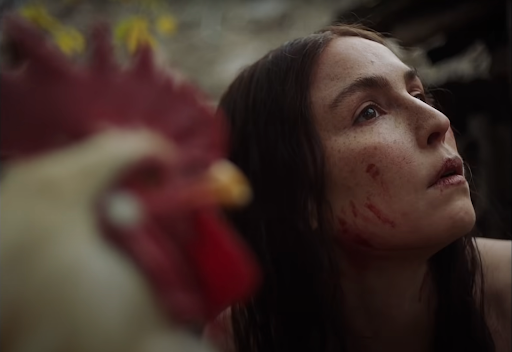
22. YOU WON’T BE ALONE
Director: Goran Stolevski
Director Goran Stolevski’s debut film YOU WON’T BE ALONE is billed as yet another elevated, experimental folk-horror film about a witch, so fans of the genre may have been quick to overlook it. Through the film, we see the witch shape-shift into any being she pleases, of any gender. Some notable transformations include becoming a beautiful young woman struggling with the oppression of toxic masculinity in her Macedonian village. Next, she reverses this role by taking on the identity of a young man exploring his power and sexuality for the first time. Later, she lives her life as a small child, a girl, learning what it means to grow up and live a full life of love, loss, expectation, joy and sorrow. While horror elements are on full display here—trigger warning for plenty of disembowelment and handfuls of intestines—the film has an air of tenderness to it. There is a compassion and understanding toward the lead character that is felt deeply even when words are not spoken. It’s a hypnotic, poetic meditation on death, rebirth, empathy, and nature vs. nurture that puts itself into a completely different category that effectively bends genre while encouraging us to sit with existential truths. [Lauren Chouinard]
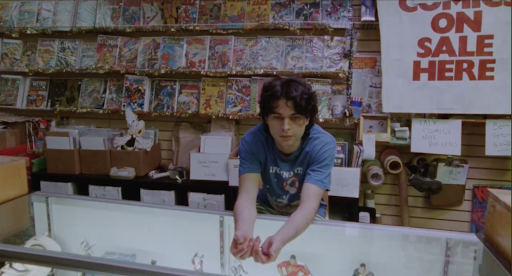
21. FUNNY PAGES
Director: Owen Kline
A coming-of-age story that any freak can relate to, Owen Kline’s debut film is a stressful (sweaty) yet funny look into the seedy underbelly of Trenton, New Jersey, and the adolescent life of Robert, a comic book-obsessed teen. After witnessing a traumatic accident, Robert decides to stick it to his parents by dropping out of school and moving out of the house, but in his determination to carve a new path, he only hurts himself… Over and over again. Isn’t that the foolish nature of youth? Rather than trust his well-intentioned, upper middle class parents, Robert prefers to put his faith in a maniac who can’t even be trusted to enter a pharmacy without flipping out. Robert needs guidance, and using his teen brain logic, Wallace is as good of a mentor as any, because he has something no one else in his suburban life has: a tangible connection to the comic book art world. For someone desperate to make his dreams come true, that is much more valuable than any level of comfort his parents can offer him. Robert is talented and hard-working, but does that mean he has what it takes to be an artist? If the Safdie brothers had directed a LADY BIRD for boys, then FUNNY PAGES would be it, just with a lot more dick and balls, both drawn and in the flesh. The film is gross enough that it would be awkward to watch with your mom (unless your mom is really cool, in which case, what’s her number?), but not so gross that I won’t call you a pussy if you can’t get through it. I sincerely hope a lot of teenagers went and saw it in the theater. [Katarina Docalovich]
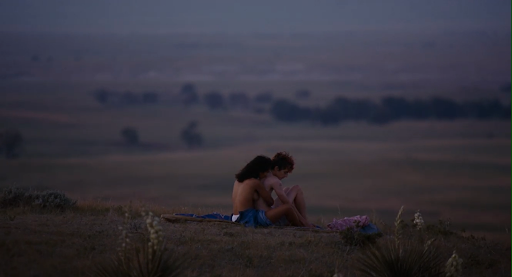
20. BONES AND ALL
Director: Luca Guadagnino
On paper, BONES AND ALL should be a mess. Its fusion of genres—YA romcom meets road trip movie meets body horror—is a recipe for disaster, opting for diametrically opposed cinematic modes over anything you’d expect to be complementary. And in lesser hands, this likely would have been a misfire. Thankfully, Luca Guadagnino is the sort of person who finds the romance, eroticism, and emotional resonance in everything he touches. If CALL ME BY YOUR NAME saw him indulging his most saccharine instincts and SUSPIRIA offered him a playground for some singularly horrific visual ideas, BONES AND ALL is the marriage of the two. Maren and Lee’s story rings true because of—and not, as a lesser filmmaker might present, in spite of—the film’s full-on embrace of the macabre. It doesn’t hurt that the cast and crew is firing on all cylinders, either. Timothée Chalamet grows more convincing as a leading man by the day, and Taylor Russell (in a long-overdue return to “art” cinema, since we’re disregarding ESCAPE ROOM as a franchise) anchors the film with a deeply earnest emotional honesty. Trent Reznor and Atticus Ross show off their best score work since THE SOCIAL NETWORK, and Mark Rylance delivers the sort of capital-C capital-A Character Acting that’s all too rare. The kids on Twitter will be talking about this baby for years to come. [Taylor Lomax]
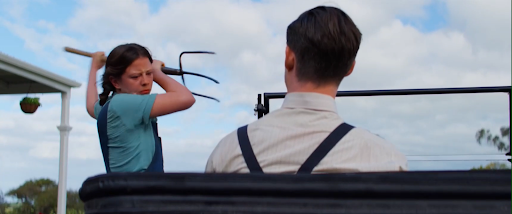
19. PEARL
Director: Ti West
Sometimes all a movie really needs is an exceptional monologue to tie everything together. I have thought about the monologue Mia Goth gives at the end of PEARL almost every day since I saw it. The film is so exceptional because it is nakedly apparent that Goth needed to exercise some demons as a failed actress-turned-axe murderer. The ferocity with which she commits to playing the part she co-wrote with Ti West is nothing short of electrifying; the self-pity, the rage, the regret that all courses through her performance are worth the price of admission alone. Luckily, this is also arguably West’s most lush and sophisticated film to date. The craftsmanship on display is ludicrous, as most of the production crew were borrowed from James Cameron’s AVATAR while they were on a break in filming. A pandemic movie that slyly incorporates COVID without being obnoxious about it, PEARL manages to feel very much like a time capsule and frighteningly contemporary all at once. The naked lust for fame, the belief that everyone deserves to be a star is more universal than ever: Pearl is unnervingly relatable as a woman ahead of her time. PEARL feels like a beacon of hope. Filmmaking will find a way to limp back after it seemed like COVID could wipe the industry out for good. [Carter Moon]
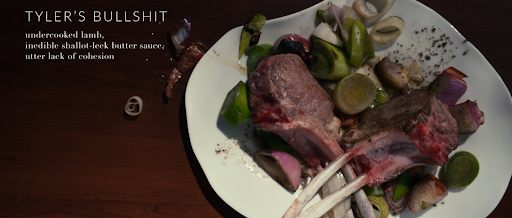
18. THE MENU
Director: Mark Mylod
Ever since I read this hilarious article about a preposterous Michelin star dining experience charging thousands of dollars to eat foam out of a plaster cast of someone’s mouth, I’ve had a sick fantasy of being a fly on the wall in a place like this. I want to watch rich assholes spend an ungodly sum just to pretend to understand food, and I want to watch them take bites of a wafer-thin amuse-bouche while their stomachs growl and rumble. That dream came true watching THE MENU, where, for the sweet price of an eight dollar matinee ticket, I got to live vicariously through a caricature cast of one-percenters who represent everything I’ve come to hate about late-stage capitalism. Subtlety goes out the window from the moment we get on the boat headed to the exclusive, upscale restaurant on Hawthorn Island, and we are taken on a ride of bizarre twists and turns. This horrific satire fully leans into its comedic surrealism, delivering one of my favorite laugh-out-loud moments in the theaters all year (“Student loans?” “No.” “I’m sorry you’re dying.”). Ralph Fiennes is the secret ingredient that pulls this whole project together as Head Chef Slowik. Fiennes is someone who I love most when he is exhibiting his driest comedy chops, and here he shines as a man so intent on acting on sheer principled hatred and disgust for culinary consumerism that he completely abandons the joy he once possessed as a budding chef. For as ridiculous as THE MENU’s premise is, that feeling of disillusionment in what was once your greatest passion is a familiar feeling; you almost feel sorry for the villainous Slowik. [Lauren Chouinard]
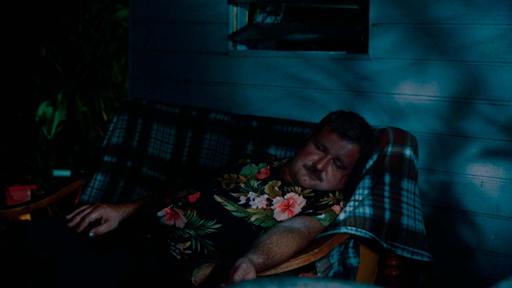
17. PACIFICTION
Director: Albert Serra
Catalan filmmaker, art collective kook, and overall provocateur Albert Serra is mostly known for period pieces that subvert any pompous preconceptions of the genre, trading them for a more Smell-o-Vision-appropriate bouquet of bodily fluid putridness. His latest, PACIFICTION (a triple entendre if you can imagine), is quite a departure from his previous work, though it maintains a somewhat similar spirit. Diplomat Monsieur De Roller, played by Benoît Magimel of THE PIANO TEACHER fame, bounces around the island of Tahiti serving as one of the last vestiges of French colonial power in the modern day. Popular with the locals, De Roller tries to quell unrest involving rumors of nuclear testing, undue American influence, and a gaggle of drug-addicted French sailors. Given his exhausting of all good faith connections made on the island, De Roller’s attempts at peace grow more and more feeble as the threat of violence becomes ever looming. Magimel’s performance is dreadfully convincing as he balances a mimosa-clinking Tom Nook portrayal with a hidden nihilism buried in his sunglasses that inevitably consumes what little hollow folksiness remains. The reality of colonial wounds burgeons forth as De Roller desperately hangs on like a scab on the verge of being picked. Despite all this heady political subtext, much of the film functions in a dreamy, downer-induced haze lulling the audience, as it does so De Roller, into a false sense of security in the face of a doomed paradise, eventually forcing the question of how a place comes to be a paradise at all. [Alec Larios]
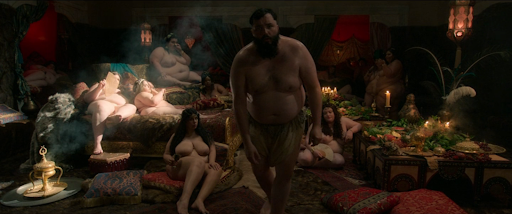
16. THREE THOUSAND YEARS OF LONGING
Director: George Miller
“There is no story about wishing that ends happily. They’re all cautionary tales,” Dr. Alithea Binnie declares early in George Miller’s THREE THOUSAND YEARS OF LONGING. Binnie, a narratologist, is in Istanbul for a conference on myth and storytelling. Through fate or chance, she comes across a fire-damaged vial which contains a Djinn who had been trapped for three thousand years. The Djinn instead regales her with stories from his long and solitary life, and eventually Alithea lets down her defenses and offers up her wish: the love of the Djinn. Perhaps in a different story, this is where the film would end. But, director George Miller (who co-wrote this script with his daughter, Augusta Gore) brings the Djinn into the present day, a world of technological wonders and of inescapable electronic noise. Miller has been trying to bring this film to the screen for over 20 years, and the finished product reflects two decades’ worth of changes that have shaped our relationship to narrative and story. Art on-demand was a luxury for the rich, but is now commonplace. Does this devalue a story’s power? Or does it just make the ones we love, the ones that speak to our souls, that much more intimate and important? THREE THOUSAND YEARS OF LONGING was due to be doomed at the box office. How can you sell a proudly classical story filled with vibrant, sumptuous spectacle to a mass audience complacent on today’s static? FURY ROAD was a propulsive, guzzoline-soaked vision of Hell in a time when franchise filmmaking was safe, and THREE THOUSAND YEARS is a soulful, expressionistic passion project in an age where mass spectacle is focused-grouped and sanded down. Its heart beats louder than any of its peers’. [Mason Maguire]
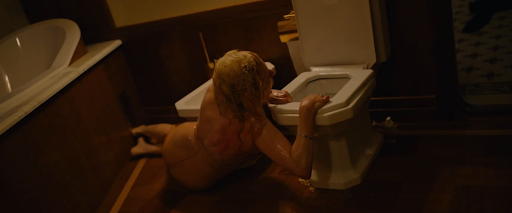
15. TRIANGLE OF SADNESS
Director: Ruben Östlund
An American Marxist and a Russian capitalist gleefully amuse themselves by trading aphorisms and insults as they completely ignore the luxury yacht they’re aboard that’s actively sinking. The metaphors in Ruben Östlund’s latest cinematic outing refuse subtlety, but that doesn’t mean they lack complexity. The people in his triptych satire are ludicrous, but Östlund goes out of his way to make sure you understand that they are all reflections of their respective circumstances. The bluntness of his satire rubbed many viewers the wrong way, but it’s actually the film’s greatest strength. As we live on the precipice of climate collapse, it’s impossible not to see that a global elite doesn’t really have a plan other than to engorge themselves as much as humanly possible until the ship fully sinks to the bottom of the ocean. What happens afterwards, for those who inevitably survive the wreckage, will most likely be a shocking reversal of roles. TRIANGLE is so compelling because Östlund does his best to pull out his crystal ball and peer into the near future where we’re all forced to rely on much more primitive means for our immediate survival. What’s clever about his speculation is that he doesn’t imagine that we’ll necessarily descend into a pure LORD OF THE FLIES chaos, but he does acknowledge that our base carnal impulses might hold us back from building utopia, too. A satire that truly prods and provokes a wide spectrum of political philosophy, TRIANGLE might have pissed you off for any number of reasons, but if you’re honest with yourself, that’s exactly what made it so effective. [Carter Moon]
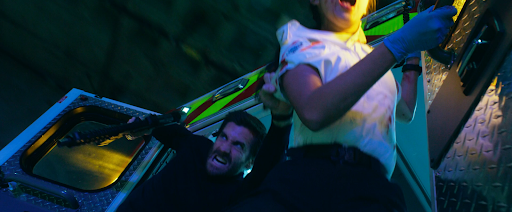
14. AMBULANCE
Director: Michael Bay
Racing on to the scene and accelerating beyond belief in the span of two hours, Michael Bay’s AMBULANCE is a blast of fresh air. Bay’s trademark vulgarity is (mostly) pared down—especially compared to his Transformers outings or BAD BOYS II. Instead, the focus is on the tense and ever-changing relationship between robbers, paramedics, and police, as each wrestle with their roles while trying to determine how to save the life of a dying cop trapped in a runaway ambulance. The two heist members and life-long friends (played by Jake Gyllenhaal and Yahya Abudl-Mateen II) are a perfectly calibrated yin and yang: Gyllenhaal’s fierce intensity and chaotic decision-making is balanced out by Yahya’s deliberation and compassion. Both actors meld into their respective roles so well that their characters’ loyalty towards each other is never up to question; one of the most memorable moments of AMBULANCE is the two adoptive brothers calming down by singing along to Christoper Cross’ yacht rock classic “Sailing.” The erratic editing and camerawork that have become Bay’s signature match flawlessly with the endless propulsion of the narrative. The drone shots deserve special praise: many sequences feature the camera diving down buildings and twisting through setpieces, equal parts dizzying and invigorating. Maybe the best pure action film of the decade so far, AMBULANCE marks a high point in Bay’s career and proves that—despite his many faults—he remains one of the most exciting American filmmakers we have left. [Ethan Cartwright]
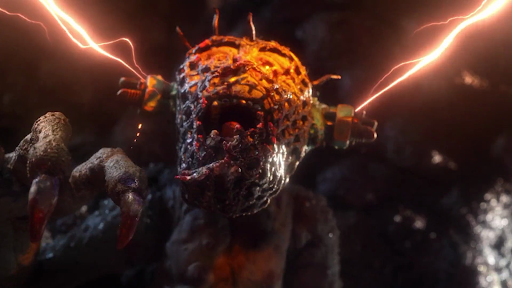
13. MAD GOD
Director: Phil Tippett
Against a blood red sky, figures ascend a tower, only for it to be struck by lightning. Calamity. Upheaval. Man’s hubris punished by a vengeful God. Inverted, The Tower resembles Botticelli’s La Mappa dell’Inferno—which is fitting, as we are to descend into Hell. Following a character called The Assassin, we journey through worlds Hieronymus Bosch or Zdzisław Beksiński might have envisioned with a bellyful of Benadryl. On its face, it seems almost a mockery that the man who gave life to STAR WARS and JURASSIC PARK would have us watch shit-shoveling ogres beat each other to death (in what could be a statement on the industry, or the creative process in general), but if it can be said that it was God who created sunsets, flowers and baby animals, the way a lover looks in a certain light, then it must be said it was He who saw fit to gift us every violent shade of death. Yes, MAD GOD is a relentless, almost gleeful parade of grotesquerie (for inspiration, Tippett has said he “watched the news”), yet it is impossible to look away from—the stop motion is so fluid it must be seen to be believed, and the sheer, unbridled imagination at play is equally awe-inspiring. What is more incredible, though, is how in the half-year or so since its release it has only become more pressing. Tippet, who began work on this most ambitious of passion projects in 1987, shelved it for 20 years with the advent of CGI. It was only after tireless encouragement and effort from volunteers that it saw the light of day. Now that A.I. has entered the mainstream and “art” can be “created” with the push of a button, where might a film such as this stand? Like The Assassin, we have no way of knowing what comes next, what may be uncovered or shown to us. MAD GOD is that pulling-back of the curtain, both indictment and testament. It stands and will stand as a singular achievement representing three decades of dedication to craft, and the history—perhaps even future—of mankind’s folly, in the most painstaking artform there is. It is the work of a Mad God. [Joseph Simpson]
![]()
12. AVATAR: THE WAY OF WATER
Director: James Cameron
There’s a saying that coral reefs are like the rainforests of the sea. But we have more rainforest than coral reef and the diversity of creatures in a coral reef is also more. The geneticist Stephen Jones once said, “You can’t turn on the television without seeing yet another wonder of nature, reefs included. There is a limit perhaps to one’s power of wonderment. I think perhaps to talk about the amazing properties of the animals that make the reefs would give them a new interest.” This is what’s at stake in the gap between a rainforest metaphor communicating the preciousness of coral reefs and that preciousness which could be communicated by taking the same metaphor apart, showing to what degree rainforests and coral reefs are not alike. Jones studied the polyps that make up coral reefs, very tiny animals, but: they do the thing. He emphasizes how a thing that gets done in nature provides sources of amazement more novel and persisting than amazement at its appearances. So it’s a biologist saying be a biologist. Ok. But, in AVATAR: THE WAY OF WATER, a production entreatied by sovereign nations, how things get done in nature is the amazing appearance, and because coral reefs won’t last long enough for everyone to see them how biologists might, the movie is also about how things get done in nature are swell, and because not everyone cares about that, there are four screenwriters, and because not everyone cares that movies be about anything at all really, there are information-dense simulations of motion, which is another way of saying, you don’t have to be a biologist to get the picture. Is this something new and cool or does it miss the point? [Jim Evans]
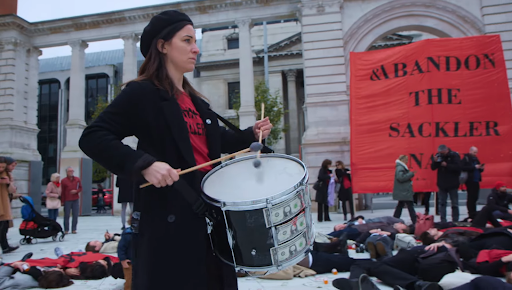
11. ALL THE BEAUTY AND THE BLOODSHED
Director: Laura Poitras
Activists dump prescription bottles into the reflecting pool at New York’s Met, laying on the ground, decrying the name of the family whose name adorns the gallery door. A curly-haired young woman looks towards the viewer, posing for the camera, while over her shoulder a friend—oblivious to the action—prims her eyebrows in a bathroom mirror. Bloodstained dollars rain from the top floors of the Guggenheim’s atrium, patrons joining protestors in their chant. A man sits up at the edge of a bed, smoking a cigarette. Orange early-morning light hits his face, torso, and upper arms. Our gaze scans across the frame to his lover, lying on a pillow, gazing up at him, awake with a fatigued and enigmatic expression. These scenes of protest were captured by Laura Poitras and her crew for their documentary ALL THE BEAUTY AND THE BLOODSHED. The intimate portraits were by the documentary’s subject, iconoclastic photographer-turned-activist Nan Goldin, whose work in the ‘70s and ‘80s illuminated and immortalized the members of the LGBT community in New York during the AIDS crisis. In recent years, Goldin has turned her focus to activism. A recovering oxycontin addict herself, Goldin founded Prescription Addiction Intervention Now (PAIN) to combat the billionaire Sackler family who manufactured the highly-addictive drug which is responsible for over half a million fatal overdoses in the United States alone. Goldin herself is no stranger to pain and loss. Early in Goldin’s life, her sister, unable to fit into the conformist 1950s, committed suicide. She lost countless friends to the AIDS crisis. She documented her abuse at the hands of a volatile lover. Grief and loss are only two facets of the equation, the bloodshed part of living. Beauty is essential, even vital, to our experience. Goldin’s photography intimately captured moments of grace, love, and celebration amongst her friends in populations that “polite society” would be more than happy to ignore. There’s pain in beauty and beauty in pain. That the film documenting her life honors and reflects this truth is miraculous on its own. [Mason Maguire]
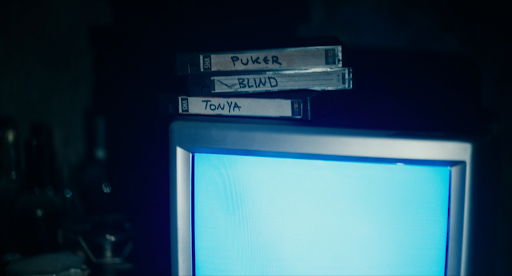
10. BARBARIAN
Director: Zach Cregger
One of the scariest movies of the year might also be the funniest, in what is sure to become a case study in the shared DNA of comedy and horror. In his feature debut, THE WHITEST KIDS U’ KNOW’s Zach Cregger went places few others would dare, prodding his cast of complex, capable, yet too-goddamn-dumb-to-live characters along an agonizing katabasis, masterfully toying with tension and release (poking at that old “suspension of disbelief” chestnut as well), before going full Goblin Mode with some serious nightmare fuel. Where the last few years may have seen a bit of a sea change, with the genre wading—perhaps drifting—further into the by-now chambré waters of trauma, BARBARIAN all but gurns with the primal. Who knows what’s behind the tall man’s weird eyes and crooked smile? Of course the dark is still scary, the Minotaur is out there. Speak your piece on grief, but getting your melon pulped is a more pressing matter. And, like that fabled labyrinth, have fun guessing where it will turn next! But that isn’t to say the film isn’t concerned with the conversations of today. Sure, Cregger relishes in licking his comedy chops, setting up this only to subvert that, all of it winding until it’s full-on sprinting to—what else—Gallagher punchlines of gore, but, like all the best bits, what really drives BARBARIAN is a raw vein of commentary. Here a double-booked Airbnb in a bad part of town serves as metaphor for Detroit as metaphor for America writ large, one where a naïve idealist, a sleazebag trying to make a buck, and a guy kind of in the middle become ensnared in not so much any sinister dealing as would appear a failing of bureaucracy, stropping Hanlon’s Razor only to go for the jugular with an uglier truth just beneath the surface. Yeah, there’s a Lisa Trevor (really an avatar of feminine rage) haunting the dark, but then there are the cops, ready to do anything but help. For all the crazy shit in this movie, Cregger is smart enough to know the real world is scarier than anything. The fact that women must be on guard yet conciliatory at all times, while men can just blunder into any situation, no matter how bad, free to make things worse in the process, is grimmer than any ghost story. [Joseph Simpson]
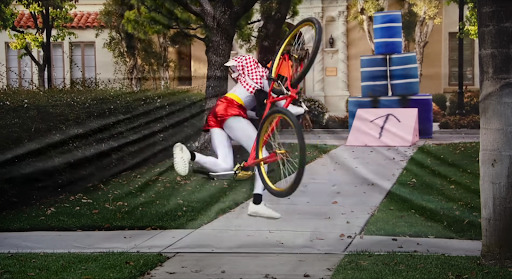
9. JACKASS FOREVER
Director: Jeff Tremaine
Oh the times they are a’changing: JACKASS FOREVER is weirdly life-affirming in how, sure, a JACKASS movie does feel really different without any of CKY, with COVID-19 looming in the background (morally, it’s a feckless stunt in itself to take up a hospital bed because you chose to get concussed by a treadmill-launched tuba), and with Johnny Knoxville hemorrhaging his brain on camera and effectively ending his career in real-time, but you see how deeply happy it makes the new cast members to be in the fourth movie, and how the old dogs play off of that enthusiasm, and it all coalesces. There’s at the very least one reason to laugh your ass off in the middle of a nightmare. Knoxville and his band of invulnerable college dropouts hotwire the cinema to exploit its core pleasures of unethical entertainment, the realization of forbidden images from your brain’s perineum, and intensely morbid viewer curiosity. Gazing at the shared spectacle of Steve-O’s spread-open asshole, testicular mutilation, genital puppetry, blunt force trauma, ball fondling, penile puppetry, vomit by the gallon, human shit by the pound, and Wee-Man flung by the yard in the same auditorium where you sit through Chris Hemsworth tap-dancing on a green screen for $20 million? It’s nearly an act of rebellion. In any year, the antics of JACKASS FOREVER would be considered boundary-eviscerating transgression, but its deluge of gleeful filth acted as a personal Polaris in a year where we were so desperate for normalcy that we started treating recycled cinematic bio-matter as revolutionary returns to form. The times haven’t changed—this demented mischief works as well as it ever has—it’s the art that lost its balls. Pain can be transformed into pleasure. and, hey, sometimes that pain is just pain. But it might just be someone’s pleasure. This ain’t a MENSA convention: we’re getting down and dirty. [Kevin Cookman]
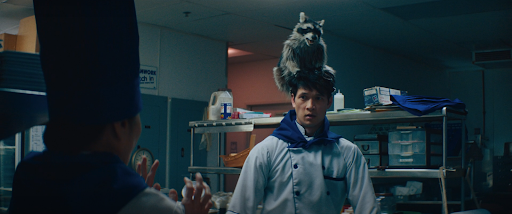
8. EVERYTHING EVERYWHERE ALL AT ONCE
Director: Daniel Kwan, Daniel Scheinert
On some core, human level, I think the average movie fan in 2022 just wanted to root for EVERYTHING EVERYWHERE ALL AT ONCE. Not unlike the nature of the very story they set out to tell, The Daniels’ kitchen sink family blockbuster saw every off-screen narrative colliding together like an unwieldy multiverse folding in on itself. Ke Huy Quan’s return to cinema! Practical effects! The return of Nine Days’ “Story of a Girl” to the zeitgeist! Michelle Yeoh’s complex moment of true Western stardom! Making five million dollars less domestically than MORBIUS! Raccacoonie! James motherfucking Hong! None of these components were truly about the film itself—a heartening and emotionally gutting multi-generation story with Charlie Kauffman instincts and the structure and plot of THE MATRIX. But those narratives made it feel like a true underdog movie worth cheering for, whether such a thing can (or should) exist. Hot dog fingers, for at least a little while longer, will continue to live on. [CJ Simonson]
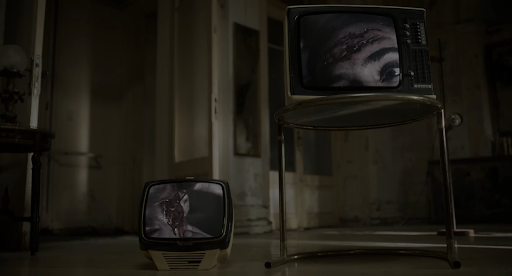
7. CRIMES OF THE FUTURE
Director: David Cronenberg
If post-quarantine living has taught anything worthwhile, it’s that the key to sanity, nay survival, is to find new bliss in the waste. A stunningly cogent masterclass from a director who once hated his ex-wife so much that he made THE BROOD to spite her has now made CRIMES OF THE FUTURE, a simultaneous instructional on the impurities of his own art and a savage mockery of the try-hards biting his flow. 2022 hosted many superlatives, but not a single director conveyed the clarity and viciousness of their intent through the visual form like the Canadian maestro. The irony of production label NEON choosing “Earman” as a mascot for the film when the character—truthfully, he’s more a sight gag—is seen by Cronenberg as a gauche, braindead vanity project is the type of sardonicism that oozes through every micro-plastic-y decision. Cronenberg’s late-period masterpiece exists in three worlds at once: its own (lush, gross, and spilling all over itself), our own (as a feature-length subtweet to every gallery loser trying to do it like he still can), and the cinema’s (how it combines the science of THE FLY, the pop culture of EXISTENZ, the medicine of DEAD RINGERS, the romance of CRASH, and the sexual proclivity of Debbie Harry in VIDEODROME). The tools that craft ethereal art are just expensive toys with customer service representatives attached, and everyone’s so busy commodifying their trauma when the chill of the cheap thrill is artistic in and of itself—it’s 100 minutes of dense, simulated conversation with one of the foremost sickos the arts has ever witnessed at his wisest and cuntiest. There is no hope for the children, but let there be ecstasy in the rot. [Kevin Cookman]
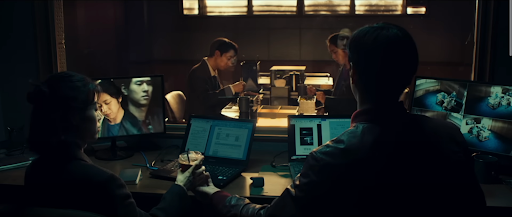
6. DECISION TO LEAVE
Director: Park Chan-wook
Some audiences were let down by Park Chan-Wook’s latest film due to a noted lack of fucked up shit—a distinct Park signature—but there’s something about a nod to Hitchcockian style while maintaining a unique directorial voice that makes my eyes pop out of my head with bulbous hearts like a cartoon wolf catching sight of a pretty lady. A man peeking into a stranger’s apartment with binoculars in search of criminal activity? It’s REAR WINDOW. A femme fatale leading a detective up great heights to a crime scene? VERTIGO, anyone? Combine that with a slow-burn, cat-and-mouse love story between cop and criminal who share a dark penchant for the macabre, and, baby, I’m hooked. The instantly “shattering,” requited-but-not-quite chemistry between Park Hae-il and Tang Wei is reminiscent of the best of the best: Jimmy Stewart and Kim Novak, Michael Douglas and Sharon Stone, Al Pacino and Ellen Barkin (SEA OF LOVE is a top-tier erotic thriller, change my mind). It is a truth universally acknowledged that the person who is most wrong for you is also the person you yearn for the most, and that when you fuck around, you find out (that things end badly). [Katarina Docalovich]
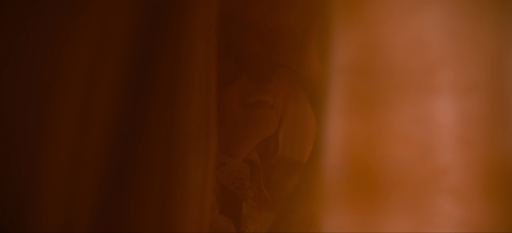
5. NOPE
Director: Jordan Peele
This summer, Tom Cruise’s F/A-18F Super Hornet wasn’t the only unidentified flying object in our filmic airspace—we also got Jean Jacket. To see Peele return after a couple years lost in the wilderness with a rejuvenated, exciting, Spielbergian modern blockbuster is a balm, and that’s not even mentioning that NOPE is very much about how all of our modern spectacle at the movies has become homogenized and diluted by maximalist CGI turds. It unfolds as Peele’s most assured film yet, and you gotta assume taking the time to let it cook during the pandemic only made it better. The way in which his nerdy obsessions are married with tangible thematic conceits and locales is one of his key strengths as a creative. Steven Yeun—giving one of the year’s best performances as Ricky “Jupe” Park—heartbreakingly cannot overcome the trauma he experienced as a child on his ‘90s TGIF monkey sitcom and is forced to cynically monetize it in a cowboy theme park. A character named OJ rides a literal white bronco wearing a SCORPION KING hoodie against a lush Hoyte van Hoytema backdrop of the Agua Dulce. Keke Palmer wears a Jesus Lizard shirt and listens to Exuma. Corey Hart gets chopped and screwed. No one can live up to the sheer stature and career that Keith David has had. Fry’s Electronics is a prominent setting. NEON GENESIS EVANGELION looms large—literally and figuratively. The list goes on and on, and I haven’t even talked about the giant angelic space manta ray in the clouds! More movies like this please! NOPE? Nah, *extremely E-40 voice* YUP! [Luke Phillips]
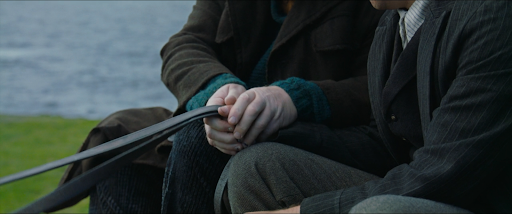 4. THE BANSHEES OF INISHERIN
4. THE BANSHEES OF INISHERIN
Director: Martin McDonagh
THE BANSHEES OF INISHERIN is something of a spiritual sequel to IN BRUGES in concept irrespective of literally anything else—reuniting writer-director Martin McDonagh with principal duo Colin Farrell and Brendan Gleeson, the results more than exceed expectations. Equal parts Beckett-ish tragicomedy and colorful period psychodrama, BANSHEES is set on the titular fictional island against the backdrop of the Irish Civil War in 1923, but hyper-focuses on the disintegration of a decades-long friendship between Gleeson’s moody bard Colm, and his neurotic sheepherding pubmate Pádraic, played exceptionally by Farrell. By turns the funniest and most depressing movie you were likely to see in 2022, it’s the BETTER CALL SAUL to IN BRUGE’s BREAKING BAD: a pitch-black comedy of errors where the bottom completely falls out. If you found yourself suddenly and abruptly ending years-long friendships during the pandemic for specious reasons, I don’t think you would be alone. BANSHEES explores how any interpersonal relationship can combust given the right inclement set of circumstances and actors at play. Sometimes, the vibes are just off. Watching Pádraic’s glum, anxious, flailing attempts to come to rational terms with those absurd and complex feelings contrasted with Gleeson’s stoic commitment to his own bit is cathartic as both take their fixations to gruesomely extreme ends. Inisherin is framed as both the period past and an imagined, nostalgic memory of Old Ireland, as far removed as Tattooine or Middle-earth. Plus, that delightful rapscallion scamp Barry Keogan turns in another trampish performance. As bawdy and uproariously funny as it is disconsolate, brutal, and distant, THE BANSHEES OF INISHERIN is something of a masterpiece. Five bloody severed fingers! [Luke Phillips]
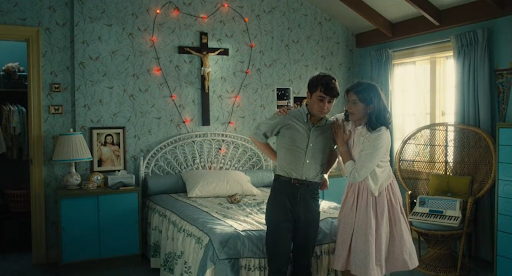
3. THE FABELMANS
Director: Steven Spielberg
For many budding cinephiles, Steven Spielberg was one of the first directors whose work you could easily explore and appreciate: globe-trotting action, invaders from outer space, and haughty historical figures. As you begin to dive further into the “canon” of world cinema—and more importantly, discover films and filmmakers outside that canon—Spielberg and his oeuvre are just as quickly tossed aside. His artistic themes and politics become too milquetoast, and many of his worst films are often too sickly sweet to fully digest. In recent years, it is even easier to reject his body of work for helping set the table for the modern blockbuster slop that is pushing every other type of movie out of theaters (including, ironically, Spielberg’s latest projects). And yet, all these detractions and hesitations are forgotten in a flash after the first few minutes of THE FABELMANS, a movie that is as funny, engaging, and heart-wrenching as any of Spielberg’s best work. Sam Fabelman/Steven Spielberg is terrific at making films, but his obsession with the craft comes less from natural talent than from the increasingly fraught relationship between his parents (played splendidly by Paul Dano and Michelle Williams) and how it fractures his family. The intense precision of Sam’s films is rooted in the fact that it’s the only thing in his life he feels he can control, and distances him from the everyday pains of being a teenager with separated parents. Spielberg importantly never casts Dano, Williams, or even Seth Rogen’s Bennie as villains, just ordinary people caught between who they want to be for themselves and who they have to be for their loved ones. There are no easy resolutions in life like there are in the movies, and it’s clear Spielberg has transferred his parents time and again into his own movies. One can easily see Burt in the father who leaves his family at the end of CLOSE ENCOUNTERS, Mitzi in the single mother of three in E.T.. If Sam Fabelman finds any solace, it comes from fully embracing cinema, a bond between artist and artform made irreversible. The triumphant final shot of THE FABELMANS may be a bit too cheeky, but what does it matter in the end? The kid’s definitely earned it. [Ethan Cartwright]
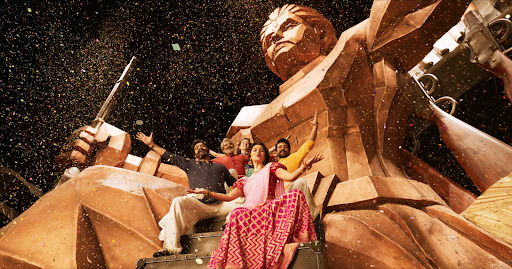
2. RRR
Director: S.S. Rajamouli
It’s Tollywood! Not Bollywood! Lest you want Director Rajamouli Sir to kick your ass. India’s biggest and most successful blockbuster is a three-hour, colonizer-killing epic that hits like a flaming train for the entire runtime. Part BASTERDS-style historical fan-fiction, part pulse-pounding action-musical, RRR’s massive impact is undeniable. Set during the British occupation, the film follows freedom fighters Komuram Bheem and Alluri Sitarama Raju as a chorus of T Series-approved musical talent sings of their seemingly doomed friendship. The strength of their brotherhood, as well as their bodies, gets pushed to the limit through set piece after bloody set piece with each one spectacularly topping the next. N.T. Rama Rao Jr. and Ram Charan pour so much of their heart and soul in these incredible performances that it’s near impossible to not feel their wanting for their forbidden bond to endure. Tying everything together, renowned composer and frequent Rajamouli collaborator M. M. Keeravani’s score easily puts every already jaw-dropping moment into immaculate territory. So much has already similarly been said with audiences and critics the world over continuing to laud the film with praise but make no mistake: the hype is more than real. RRR is a once-in-a-generation cultural event that is not to be missed. Fuck Netflix for not streaming the original Telugu language version! All the more reason to see this in a theateRRR! [Alec Larios]
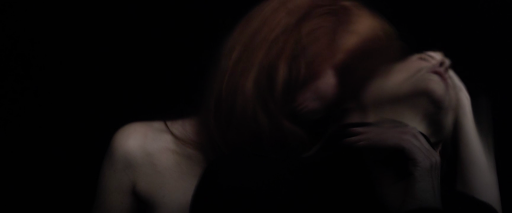
1. TÁR
Director: Todd Field
I saw a Tweet that said Lydia Tár is a character who should have a Wikipedia page. She’s the sort of literary character who, in all her multitudes and mess of complexities, feels instantly at home in the cultural canon. And TÁR centers her brilliantly, with only two shots in its 157-minute runtime that lack Blanchett’s U-Haul lesbian genius. Rarely do we get films these days that are this ethically complex—confronting at once the most extraordinary and sinister human impulses and recognizing their alarming interconnectedness. Sure, it tackles cancel culture, but it shies away from being about cancel culture (and what a lame thing to be concerned about!). Power is the operative dynamic in the film, and despite the inherent obviousness of an “absolute power corrupts absolutely” thread, we’re left without a moral compass. Lydia abuses her power, but we never once question her right to said power in the first place. Her lib-owning Juilliard masterclass should, in theory, read as bigoted, antiquated, and “problematic,” but Field gives her the space to be so often right despite her clear destructive and sinister behaviors that drive the narrative. Anyone you’re tempted to root for is, in some way, intoxicated by this power. They tolerate it until they reach some arbitrary breaking point. It stops benefiting them, and then they decide to care.
And even the audience doesn’t come out unscathed, with its middle finger of an ending convicting us as patrons for where the line lies for us; when do we culturally let people like Lydia get away with what they’ve done? If we sideline art and decide we’re above it, does that remove us from culpability? What gives us the right to look down on art in the first place? And all this in a movie that’s so often brilliantly elevated in the way we expect “A Movie” to be. Blanchett’s performance leaves no scenery unchewed, the characters’ conversations are electrifyingly loaded, and it’s consistently funny as hell. Field’s direction is tight in a manner that recalls THE SOCIAL NETWORK’s revelatory slickness, and his script is even tighter. It’s nothing short of a stroke of genius and one of the boldest, most incendiary cinematic statements in recent memory—a furious response to the moment that I am confident will hit just as hard decades from now. Five stárs. [Taylor Lomax]




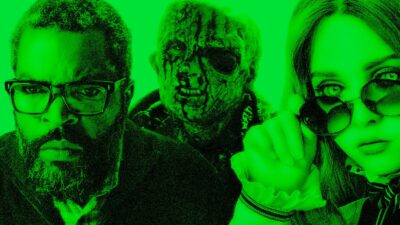









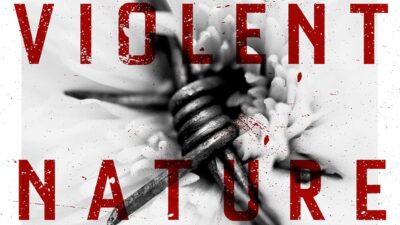

Comments